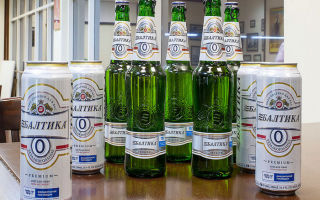Content
- 1 How non-alcoholic beer is made
- 2 The chemical composition and calorie content of non-alcoholic beer
- 3 Why is non-alcoholic beer useful and harmful?
- 4 Is it possible to drink non-alcoholic beer for pregnant and lactating women
- 5 Non-alcoholic beer and children
- 6 Non-alcoholic beer for athletes
- 7 Drinking non-alcoholic beer for certain diseases
- 8 Do you get fat from non-alcoholic beer?
- 9 Non-alcoholic beer while taking antibiotics and antidepressants
- 10 Can drivers drink non-alcoholic beer
- 11 Can non-alcoholic beer be encoded
- 12 Which beer is more harmful: non-alcoholic or alcoholic
- 13 Conclusion
The benefits and harms of non-alcoholic beer is a very controversial issue, not only from the point of view of physiology, but also from the ethical side. Of course, this drink is advertised as harmless to the body - including for adolescents, but doctors strongly disagree with such an advertising policy, as well as with the postulated harmlessness of electronic cigarettes.
How non-alcoholic beer is made
In production, it is much more complicated than usual. Since such a drink differs only in the amount of ethanol, the main stages of production remain the same, but several more are added to them. The goal of these additional steps is to reduce the alcohol content of the drink as much as possible.
There are several ways to do this:
- By lowering the temperature, the fermentation process is stopped, thereby reducing the amount of alcohol.
- While maintaining the boiling point, the alcohol is evaporated from the finished beer.
- Alcohol freezes - since alcohol freezes more slowly than water, this method can be used to separate them from each other.
- Membrane filtration or dialysis - the finished alcohol is passed through several membranes with cells of such a size that alcohol molecules cannot pass through them. This method preserves the flavor of the original beverage.
- Yeast is replaced with a special variety that does not produce alcohol, but when used, lactic acid is formed.
- Finally, during the preparation process, fermentation is excluded from the stages, that is, yeast is not added to the wort. The disadvantage of this method is that the drink barely resembles regular beer. The plus is the complete absence of alcohol in the drink.
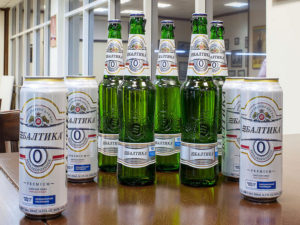
The chemical composition and calorie content of non-alcoholic beer
Beer 0 degrees in its composition is similar to that which contains ethanol. It belongs to low-calorie foods - there are 25 to 30 kcal per 100 grams, depending on the variety. As for BJU, there are practically no proteins and fats in the drink, and carbohydrates in the composition are from 5 to 6.5 mg.
As for vitamins and chemical elements, in addition to water, the composition includes:
- vitamin A - 2 mg;
- vitamin PP - 0.8 mg;
- vitamin C - 0.5 mg;
- potassium - 40 mg;
- phosphorus - 12 mg;
- calcium - 9 mg;
- magnesium - 7 mg.
Cobalt is found in the soft drink as an element that is harmful to health.
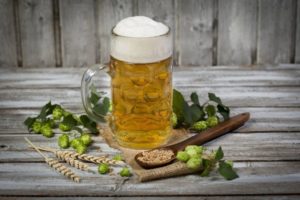
Why is non-alcoholic beer useful and harmful?
In general, since non-alcoholic beer still contains from 0.5 to 1% alcohol in its composition, it is impossible to call it completely non-alcoholic - and harmless -. Non-alcoholic beer is not as dangerous for health as usual, but, like any weak drug, it is harmful to the human body.
Since it contains ethanol, it is, like other alcohol, toxic, albeit to a lesser extent. In addition, cobalt, which is used to create beer foam, harms the heart.Since the composition includes hops and malt, the endocrine system is harmed, and non-alcoholic beer is dangerous for the liver and kidneys.
However, the drink still has several advantages.
For women
The benefits and harms of non-alcoholic beer for women are as follows.
The advantages of the drink are as follows:
- Low calorie content allows you to use it without fear of gaining weight. In some cases, it is used as part of the diet.
- The minimum alcohol content allows you to drink it without fear of intoxication - and therefore not expose yourself to additional danger, that is, loss of consciousness, impaired coordination, and so on.
Disadvantages include:
- Body harm, including ethanol toxicity.
- The possibility of addiction, and therefore alcoholism.
For men
The benefits and harms of non-alcoholic beer for men in general do not differ from the harm and benefits that this drink brings to women. However, there are also those pros and cons that are important for men.
Positive sides:
- Reducing the risk of cancer.
- No hangover.
Drinking a drink has the following disadvantages:
- Since the use of hops disrupts the work of the hormonal system, the amount of testosterone produced decreases, which means that female hormones begin to prevail in the body.
- As a result of frequent use, reproductive disorders are possible.
For the elderly
Considering all the disadvantages of using this drink, it is highly discouraged for elderly people to consume it. On the positive side, it is possible to name only a lower toxicity compared to ordinary beer.
In general, if you cannot do without alcohol, such a drink is better suited than one containing alcohol - but not at the expense of the benefits of zero beer, but because of less harm.
Is it possible to drink non-alcoholic beer for pregnant and lactating women
Due to the hormonal imbalance caused, as well as the negative effect on the heart, blood vessels, liver, kidneys and brain, drinking beer, both non-alcoholic and containing alcohol, is highly undesirable during pregnancy. Since during this period the child's body is connected to the mother's, the use of harmful substances can affect the condition of the fetus, up to problems with the development of the child or the occurrence of pathologies. It is also strongly discouraged to consume non-alcoholic beer while breastfeeding.
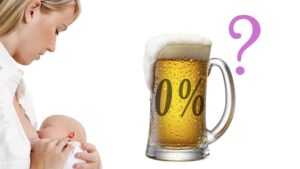
Non-alcoholic beer and children
In advertising campaigns, this drink is presented as completely devoid of ethyl alcohol. However, this is not the case - depending on the preparation method, different varieties contain different amounts of ethanol - from 0.5% to 1%. Since the body of children and adolescents is not fully formed, the negative effects characteristic of light narcotic substances affect them more strongly, even non-alcoholic beer can cause addiction.
Despite the fact that it is not legally forbidden to sell a soft drink to children if the alcohol percentage is less than 0.5%, this is still not worth doing. Many shops selling liquor do this and refuse to purchase non-alcoholic beer for minors.
Non-alcoholic beer for athletes
Since physiologically, people involved in sports are not much different from others, the harm of non-alcoholic beer extends to them. Cobalt is especially harmful, since it negatively affects the work of the cardiovascular system, and this effect increases after physical exertion.
However, in the event that it is impossible to do without alcohol for some reason, it is preferable to use just such a drink because of its low calorie content and the minimum amount of fusel oils in the composition.
Drinking non-alcoholic beer for certain diseases
In addition to age and pregnancy, contraindications to use include the following diseases:
- cystitis:
- prostatitis;
- gout;
- hemorrhoids;
- pancreatitis and other gastrointestinal diseases;
- hepatitis C;
- epilepsy.
In a small amount, you can drink this drink with hypertension or hypotension, but it is important not to exceed the recommended amount of 300 ml, maximum - half a liter. The same applies to psoriasis, but in this case it is better to choose a beer with a minimum ethanol content.
Since almost any disease involves taking medications, it is better not to drink alcohol at all during this period. This is due to the harm that can be caused by the distorted action of medications.
Do you get fat from non-alcoholic beer?
The low calorie content of the drink is perhaps its main positive feature. A number of diets are based on its use, but it is still better not to sit on them, since even such a non-alcoholic drink is harmful to health.
Since there are only 26-30 kcal per 100 ml, it is difficult to recover from it, unless you drink several liters a day.
Non-alcoholic beer while taking antibiotics and antidepressants
When interacting with alcohol, many antibiotics and antidepressants either change their properties or enhance their effect, which is extremely harmful in the case of antidepressants or sleeping pills. In addition, their action can be distorted by the influence of other substances.
Another reason not to mix medication and beer, even if devoid of alcohol, is that a number of diseases are contraindications for drinking.
Can drivers drink non-alcoholic beer
The answer to this question depends on the loyalty of the traffic police, as well as on the state of the body, the amount drunk and how much time has passed since the moment of drinking.
Theoretically, it is not forbidden to drink a drink containing less than 0.5% alcohol before driving, but in practice, after drinking, particles of alcohol may remain in the blood, and after their detection, the driver may be fined or revoked.
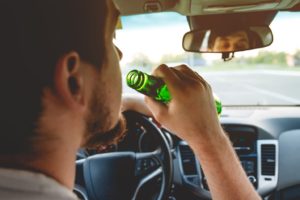
Can non-alcoholic beer be encoded
It is strongly discouraged for a coded person to drink even non-alcoholic beverages, as this can cause intoxication. Another reason is that this increases the likelihood that the encoded one will "break" and return to drinking alcohol in the same, and even larger quantities.
Which beer is more harmful: non-alcoholic or alcoholic
Comparing non-alcoholic beer with regular beer, it must be said that in both cases there is significant harm to the body. However, the organs affected are different.
In the case of alcoholic beverages, the main harm - due to the toxins contained in beer - is caused to the brain, hormonal and endocrine systems.
In the case of non-alcoholic beer, it is mainly the heart and digestive systems that suffer.
Conclusion
The benefits and harms of non-alcoholic beer are incomparable, its inherent positive qualities are practically insignificant in comparison with the negative ones. We can say that there is only one reasonable way to minimize harm to the body - to drink as little as possible, and it is better not to drink at all.

